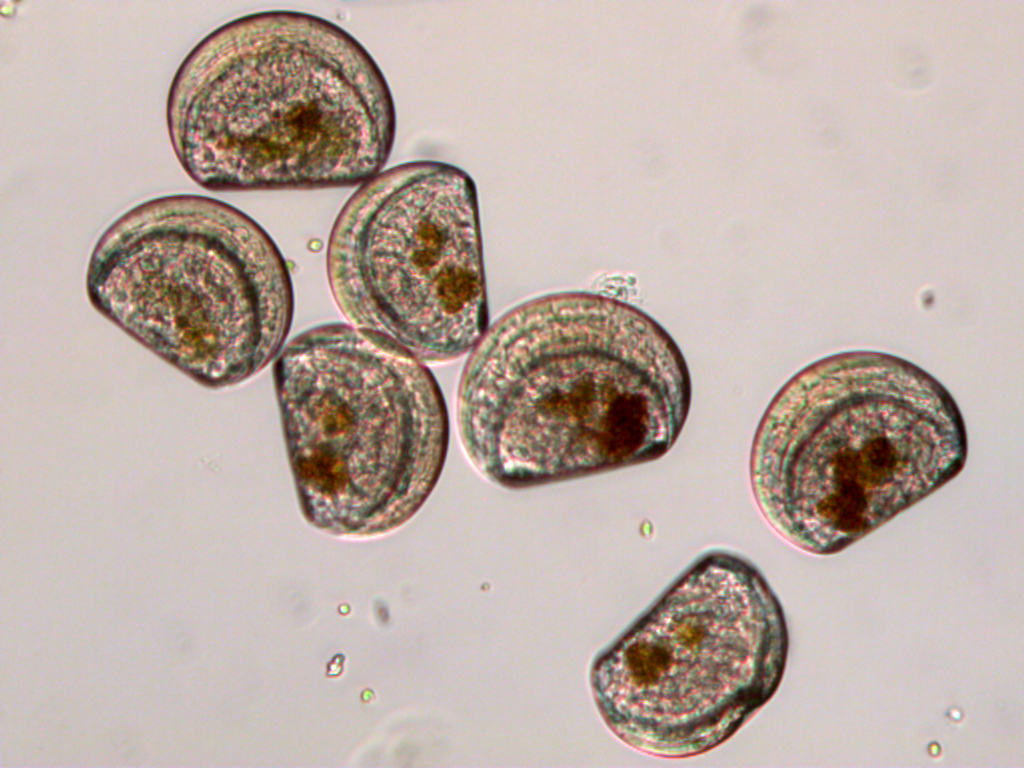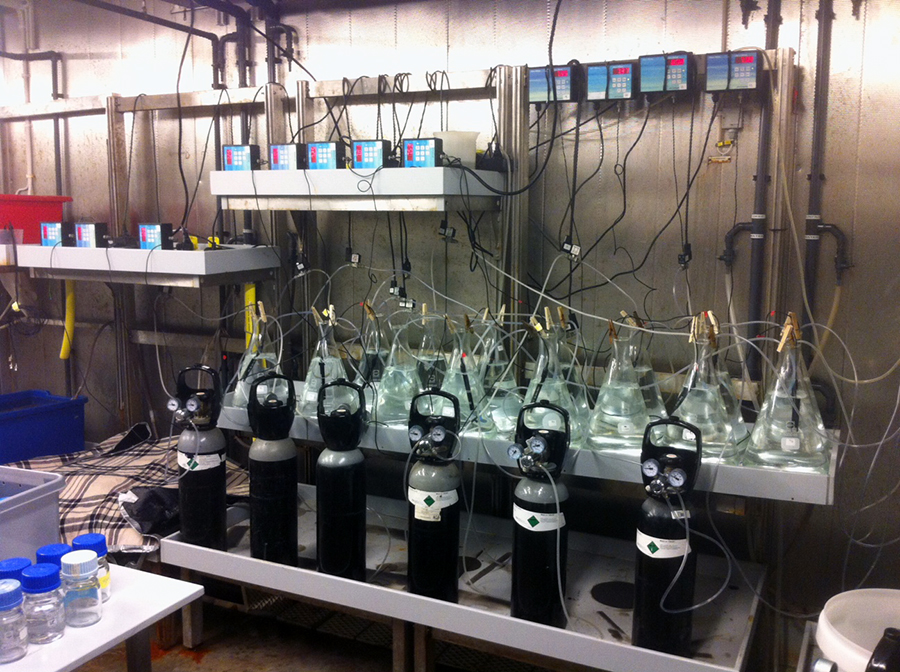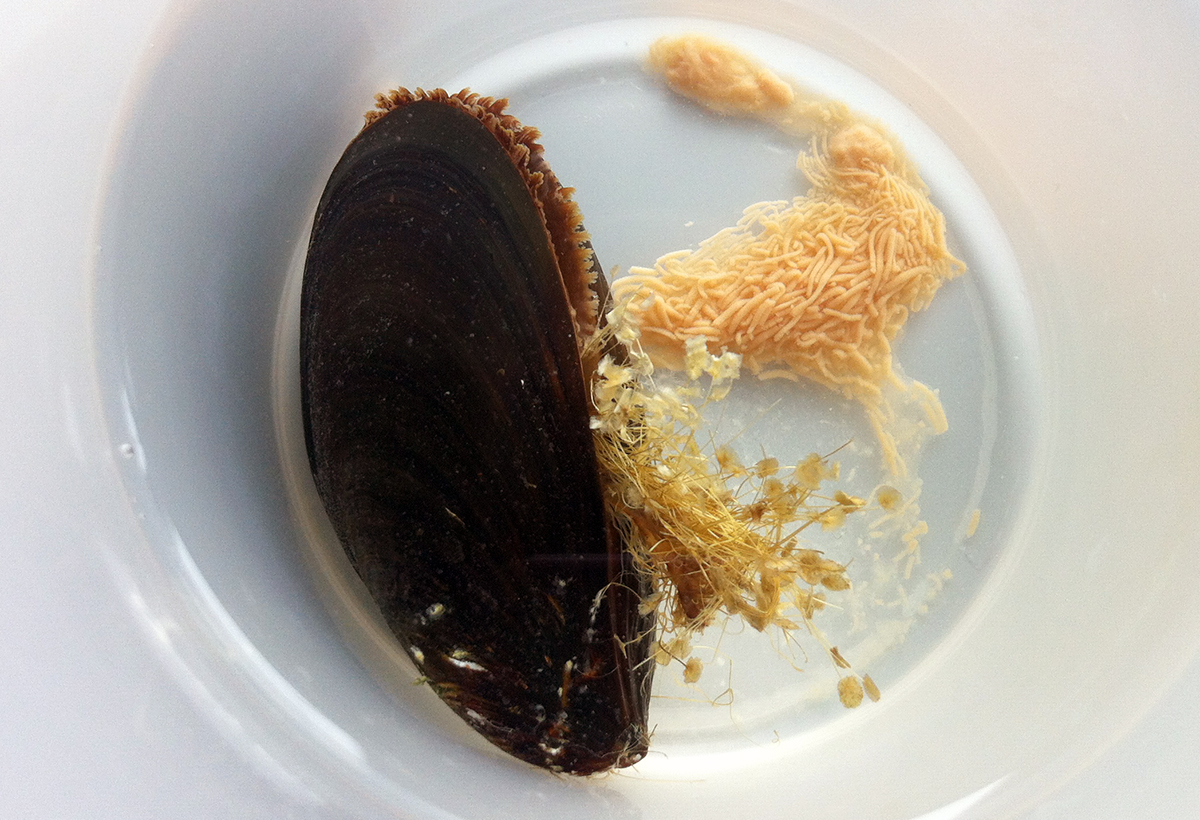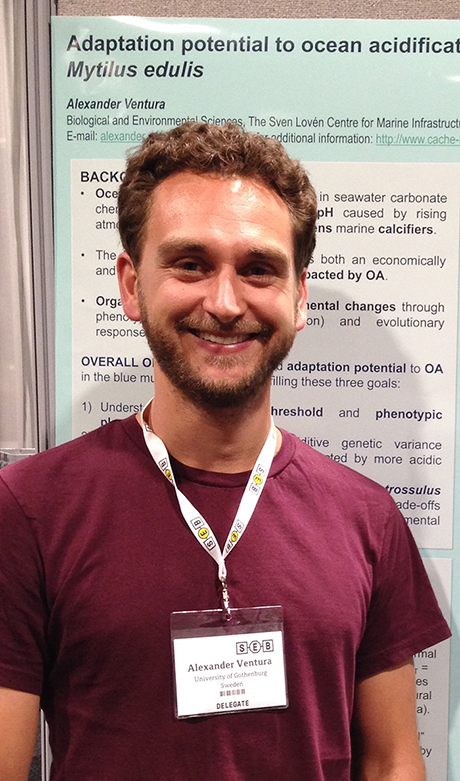
Because their shells are calcium carbonate, mussels and oysters can be affected by the increasing acidity of our oceans. New research from the University of Gothenburg highlights two major factors of great importance in the survival of mussel larvae. One of them is how the larvae react to environmental changes. The other is their ability to adapt to lower pH values.
“So that we can continue to farm and eat them, it is important to understand how mussels will be able to survive in the future,” says Alexander Ventura of the Department of Biological and Environmental Sciences, the University of Gothenburg. He is the author of a new doctoral thesis.
Ocean acidification is the result of the water taking up some of the carbon dioxide emitted to the atmosphere. This acidification is increasing in line with pollution. Unfortunately, the water’s increasing acidity can have negative  effects on marine organisms that have calcium carbonate shells. Simply put, it is more difficult for animals such as mussels and oysters to grow and maintain their shells.
effects on marine organisms that have calcium carbonate shells. Simply put, it is more difficult for animals such as mussels and oysters to grow and maintain their shells.
“However, thanks to evolution and animals adapting to changing environments, negative consequences of environmental changes such as ocean acidification may disappear over time,” explains Alexander.
To study the resistance of the larvae of the blue mussel (Mytilus edulis), he exposed them to different pH values. These ranged from normal sea values (average 8.1) down to the extreme 7.1. This demonstrated that the tolerance threshold for mussel larvae corresponded to the lowest pH value to which they are normally exposed in their natural environment (i.e. approximately 7.8).
“However, we also discovered that several larvae in the population tolerated lower pH values of around 7.6. This is a sign of their potential to adapt to ocean acidification,” comments Alexander.
The researchers also studied the hereditability of the characteristics that can affect the larvae’s survival. These studies showed that two important survival characteristics (mussel larvae size and shell malformations) were very much passed on when the larvae were exposed to low pH.
 “This seems to indicate that the mussels have high adaptation potential,” states Alexander.
“This seems to indicate that the mussels have high adaptation potential,” states Alexander.
The researchers also identified which genes come particularly into play when larvae start shell growth. Genetic experiments were carried out on the larvae of the Pacific oyster (Crassostrea gigas) rather than on mussels. This is because the oyster’s genome has been mapped out and it is thus easier to identify which genes are of interest.
“To be able to predict what effects environmental changes will have in the future, it is important to understand what happens inside the cells of sensitive oyster larvae when the first shell grows,” reveals Pierre De Wit, supervisor and reader at the University of Gothenburg’s Department of Marine Sciences.
 Alexander Ventura’s research project is part of a larger EU project (CACHE) that investigated whether commercial shellfish such as mussels, oysters and scallops could resist environmental changes.
Alexander Ventura’s research project is part of a larger EU project (CACHE) that investigated whether commercial shellfish such as mussels, oysters and scallops could resist environmental changes.
Places where the research was carried out: Gothenburg; the Oregon Department of Fisheries; and, the Wildlife and Coastal Oregon Marine Experiment Station (Oregon State University, Newport, Oregon, USA).
Contact:
Alexander Ventura, Department of Biological and Environmental Sciences, the University of Gothenburg: mobile +46 (0)76 32 055 23; email xela3185@gmail.com.
Pierre De Wit, Department of Marine Sciences, the University of Gothenburg: telephone +46 (0)31 786 9550; email pierre.de_wit@marine.gu.se.
Thesis title: Bivalves in the face of ocean acidification.
Supervisors: Sam Dupont and Pierre De Wit.
Read a summary of the results of CACHE (the EU project) here: https://cordis.europa.eu/result/rcn/219644_en.html.
Read more about CACHE (the EU project): https://www.cache-itn.eu/.
Photos
1. Mussel larvae 2. Experiment 3. Female mussel spawning 4. Alexander Ventura